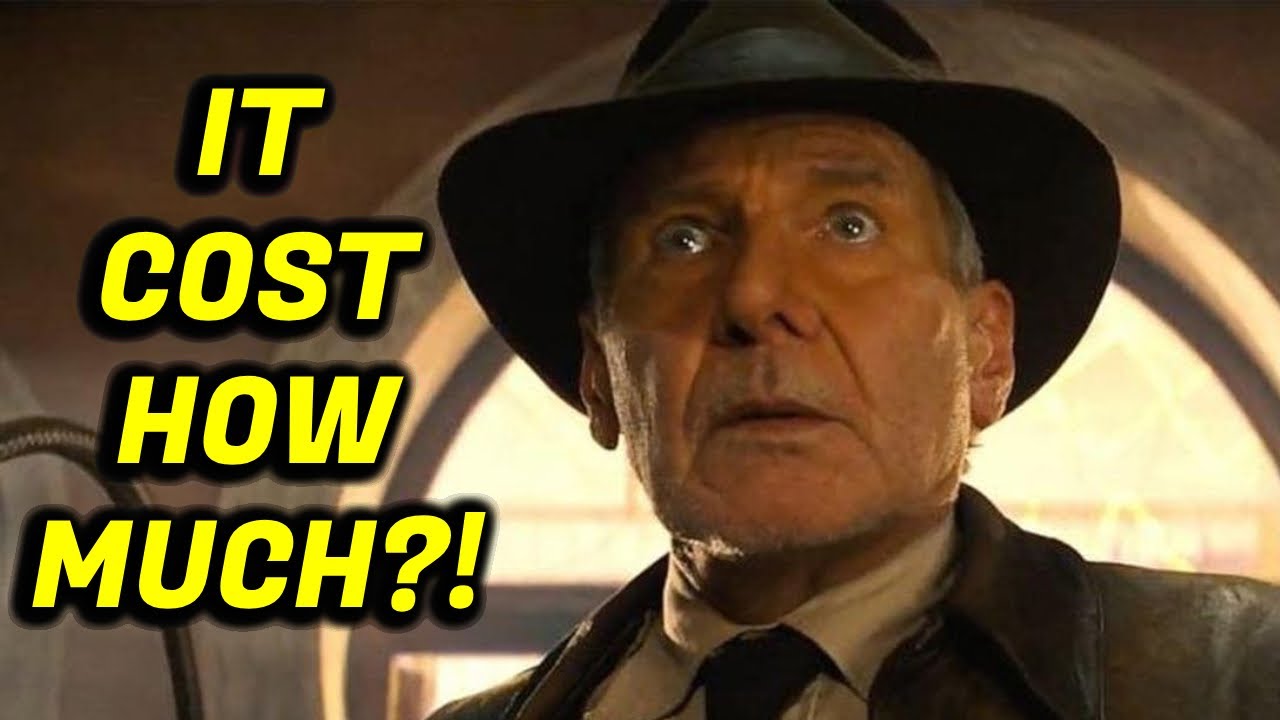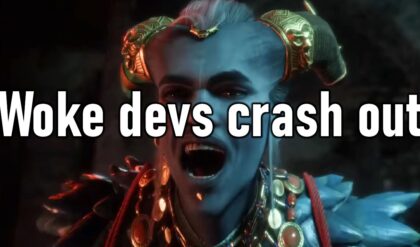🚨 DISNEY’S $419 MILLION MISTAKE: Indy Whips Up a Fortune… Straight into the Trash – Lucasfilm’s Latest Legacy Killer!
Remember when adventures were cheap thrills? Now, Harrison Ford’s final fedora fling costs more than a small country’s GDP – and bombed harder than a booby-trapped boulder. Insiders spill: Bloated budgets, de-aged disasters, and exec ego that’s left the Mouse House broke and broken. Is this the end of the whip-cracking era? 😤
Crack open the vault on Hollywood’s wildest waste – what’s next for the ark of flops? Click before it’s buried forever. 👉

Fresh financial filings from The Walt Disney Company have peeled back the curtain on one of Hollywood’s most audacious – and agonizing – bets: Indiana Jones and the Dial of Destiny, the fifth and ostensibly final chapter in the whip-cracking archaeologist’s saga, clocked in at a staggering $419 million production cost. That’s according to detailed statements from PLT Productions (UK), the Disney subsidiary that handled the film’s UK-based shoots, marking it as one of the most expensive movies ever greenlit. Adjusted for a $66.7 million UK tax rebate, the net outlay still tops $352 million – a figure that, when stacked against its $384 million worldwide gross, leaves Disney nursing an estimated $160 million theatrical loss, not counting marketing or ancillary revenue.
For a franchise born in the practical-effects era of the 1980s, where Raiders of the Lost Ark (1981) squeaked by on $18 million (about $65 million today), the escalation is eyebrow-raising. Directed by James Mangold – stepping in for franchise architect Steven Spielberg – the 2023 release stars Harrison Ford, then 80, as a weary Dr. Henry Jones Jr., reluctantly pulled from retirement by his goddaughter Helena Shaw (Phoebe Waller-Bridge) to chase a mythical Antikythera mechanism capable of time travel. The ensemble includes Mads Mikkelsen as the Nazi antagonist Jürgen Voller, Antonio Banderas as a rogue diver, and Ethann Isidore as the plucky young Teddy. John Williams returned for his final score, infusing the proceedings with nostalgic swells amid chariot chases through ancient Syracuse and a frenzied New York tickertape parade gone awry.
The film’s journey from script to screen was a labyrinth of delays and dollars. Development kicked off in earnest after Disney’s 2012 $4.05 billion acquisition of Lucasfilm, which bundled the Indiana Jones IP with Star Wars. Frank Darabont penned the original draft in 2015, envisioning a darker tale of Indy confronting the ghosts of his past, including the death of Marion Ravenwood (Karen Allen) and estrangement from son Mutt Williams (Shia LaBeouf, absent here). Spielberg bowed out as director in 2020, citing a desire to hand the reins to a new voice, with Mangold – fresh off Logan (2017) – boarding in 2021. Production, plagued by COVID-19 shutdowns, spanned February to July 2021 across Morocco, Sicily, Scotland (doubling as Tangier and New York), and Hungary, with principal photography wrapping amid whispers of a ballooning budget already at $200 million.
Post-production proved the real money pit. An extended 25-minute prologue set in 1944 featured Ford de-aged via Industrial Light & Magic’s (ILM) cutting-edge AI-driven tech to resemble his 1981 self – a sequence Mangold defended as “essential” but critics later dubbed “uncanny valley nightmare fuel.” Reshoots in early 2023, including tweaks to the third-act time portal climax, added $79 million alone, per Forbes analysis of the filings. Visual effects tallied 2,350 shots, from CGI horse stampedes to a stormy temporal rift, outsourced to ILM and other vendors. “We pushed boundaries to honor the legacy while innovating,” Mangold told Variety in a 2023 interview, but insiders leaked to The Hollywood Reporter that creative clashes – including Waller-Bridge’s uncredited script rewrites – fueled the overruns.
The price tag places Dial of Destiny in elite – or infamous – company. It eclipses Avatar: The Way of Water‘s $350-460 million (depending on credits) and edges out Star Wars: The Force Awakens ($306 million net) as Lucasfilm’s priciest outing. Forbes pegs it eighth on the all-time list, behind behemoths like Pirates of the Caribbean: On Stranger Tides ($379 million). Yet context matters: Unlike those tentpoles, Indy’s haul underwhelmed. Opening to $60 million domestic – eclipsed by Sound of Freedom and Mission: Impossible – Dead Reckoning Part One – it legged out to $174 million stateside and $209 million overseas, per Box Office Mojo. International markets, from China ($18 million) to France ($12 million), cited “superhero fatigue” and an aging lead as turnout killers.
Break-even math is brutal. Studios typically pocket 50% of grosses after theater cuts, netting Disney $192 million here. Subtract the $352 million net spend, and the red ink flows at $160 million theatrically – a tally Deadline earlier lowballed at $143 million using a conservative $300 million budget estimate. Factor in $100-150 million in prints and ads (standard for blockbusters), and total losses could top $250 million, per Collider projections. Ancillaries offer slim solace: Disney+ streams drew 474,000 households in week one (Samba TV), but VOD and merch – including a tepid Lego line – haven’t offset the hit. “It’s a classic case of overinvestment in nostalgia without broad appeal,” quips analyst Paul Dergarabedian of Comscore.
Critics were middling: A 69% Rotten Tomatoes score praised Ford’s grit (“He sells the weariness without whining,” per The New York Times) and Williams’ cues but panned the “bloated runtime” (154 minutes) and “fan-fiction vibes.” Audiences fared better at 88%, with older fans (55+) turning out loyally, but Gen Z skipped it – exit polls showed just 22% under-25 attendance. Cannes’ 2023 premiere, out-of-competition, drew polite applause but sparked backlash over the de-aging (“Looks like a deepfake wax figure,” tweeted @DiscussingFilm). Mangold, in a recent Paramount deal announcement, reflected: “We swung for the fences; sometimes you strike out.” Ford, promoting Captain America: Brave New World, shrugged to The Wall Street Journal: “Shit happens. I wanted one more story.”
The flop ripples through Burbank. Disney, under CEO Bob Iger’s cost-slashing regime, has axed non-Marvel/Star Wars Lucasfilm projects, including a Young Indiana Jones series. Kathleen Kennedy, Lucasfilm president since 2012, faces heat: Her tenure birthed Solo: A Star Wars Story‘s $275 million loss and Willow‘s Disney+ cancellation. Dial‘s misfire – the third Lucasfilm franchise fumble after Star Wars sequels’ diminishing returns and Willow‘s dust-up – prompts whispers of reboot talks. A younger Indy, perhaps via TV or film, is rumored, but That Park Place reports execs are wary: “Why risk another $400 million on a relic?” X erupts with schadenfreude – @TPPNewsNetwork’s post on the $419 million reveal snagged 225 likes, memes dubbing it “Indiana Jones and the Dial of Debt.” @Barnett_College lamented the “legacy tarnish,” while @darkhorizons flagged it as “Hollywood’s wake-up call.”
Zoom out, and Dial embodies Tinseltown’s inflation epidemic. Post-pandemic shoots jacked costs 20-30% via safety protocols; VFX rates surged amid talent shortages. Yet Disney’s playbook – frontload spectacle, chase IP glory – backfired. The Marvels ($237 million loss) and Strange World ($197 million) echo the pattern: High-stakes swings yielding low yields. Iger, back since 2022, vows “quality over quantity,” but 2025’s slate – Mufasa: The Lion King ($200 million bet) – tests that. For Indiana Jones, the ark’s sealed: No sixth film imminent, per insiders. Mangold eyes Star Wars or DC next, but his Indy scar lingers.
Ford’s sendoff, bittersweet, underscores the irony. The everyman hero who dodged boulders now dodges obsolescence. “Indy taught us fortune and glory,” Ford mused in 2023. For Disney, it’s a lesson in hubris: Sometimes, the real curse is the budget you chase along the way. As filings close the books, one relic endures – the originals on VHS, blissfully under $20 million apiece. In adventure’s ledger, not all treasures pan out.





